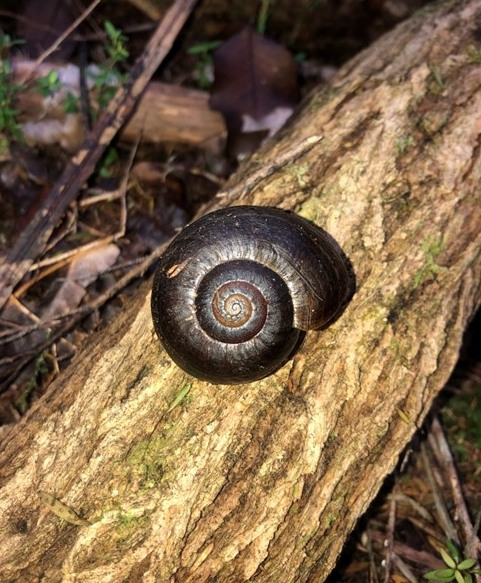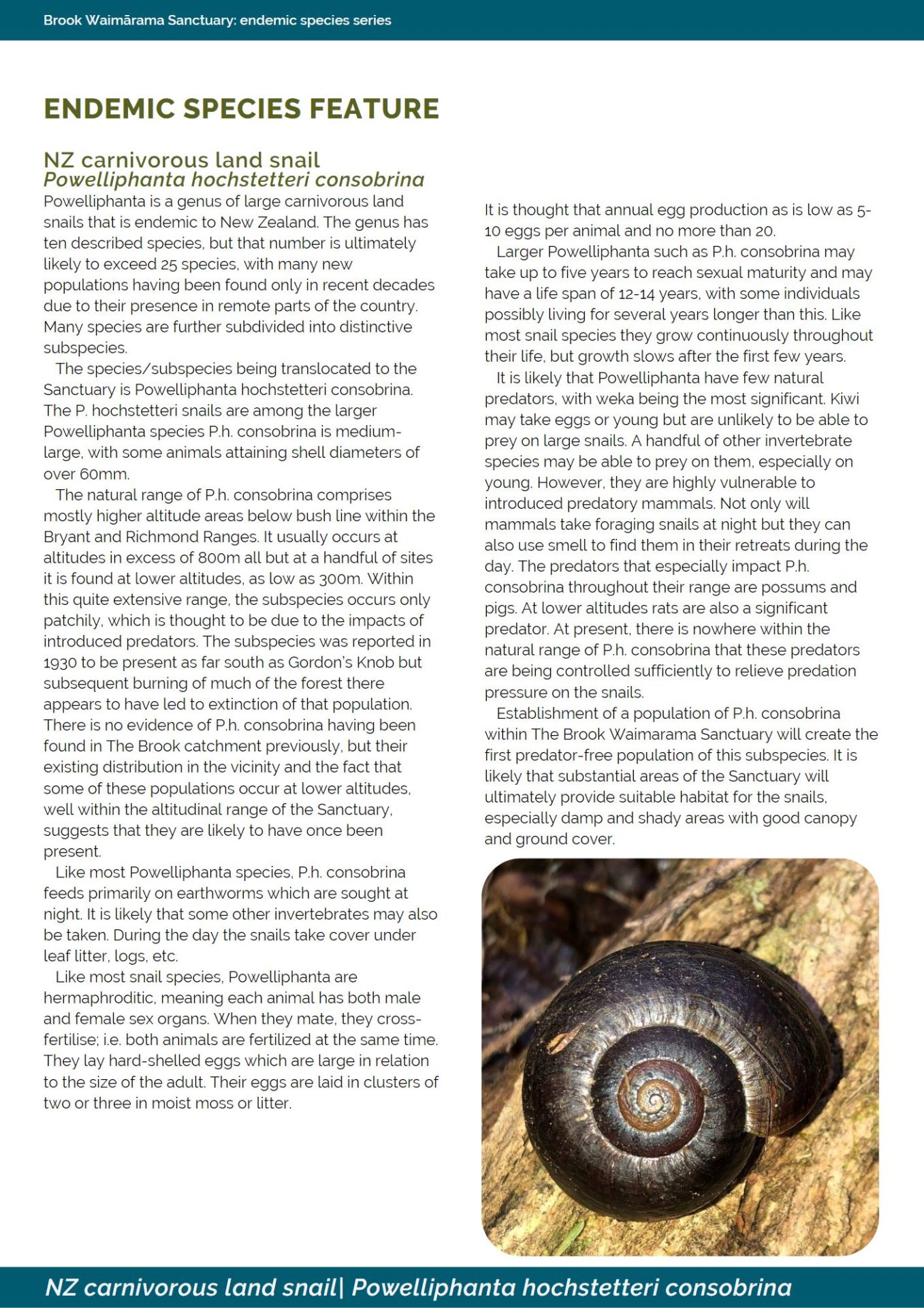Translocation of powelliphanta
In June of 2022 thirty-five “nationally critical” endangered powelliphanta (native carnivorous) land snails were translocated to the Sanctuary, followed by an additional nine snails in September of 2022. The first snails were gathered in the Maitai Vallery and the Roding Water Reserve between 12-26 May 2022, and released in the Sanctuary on 17 June 2022. A second collection in the Rocks Hut/Coppermine Saddle area occurred 5-7 September, and nine additional powelliphanta were translocated/released in the Sanctuary on 8 September 2022. The short (approx. 7 minute) video documents the process of translocating these fascinating and rarely seen native snails.
Our thanks for external expert powelliphanta advice from Ian Millar, and Dr. Kath Walker of the Department of Conservation.
Our thanks also to Fraser Heal for the video production, and to all the staff and volunteers involved in collecting and translocating these precious taonga to the safety of the Sanctuary.
What does this mean for us?
The translocation of powelliphanta follows earlier translocations of kākāriki karaka (the orange fronted parakeet) and tīeke (saddleback) into the Sanctuary in April 2021.
The translocation of 44 powelliphanta signals that the Department of Conservation, local iwi and others are confident that we have the necessary bio-security policies, procedures, infrastructure and technical expertise to ensure reintroduced species have the best possible chance of survival and to increase in numbers. This opens the way to further reintroductions, the Sanctuary vision is to return a number of species such as tuatara, kaka, kiwi, and others to the Sanctuary habitat.
What is a successful translocation?
Establishment is achieved when a population has become self-sustaining. Depending on the release environment and species involved, this may take several years, this is particularly the case with a species such as powelliphanta which are slow to reproduce.
The translocation process
In total, we located and translocated 44 snails in 2022 to the Sanctuary, these were located in the Rocks Hut/Coppermine Saddle vicinity, in the Roding Water Reserve and from Ngati Koata land forestry land in the Maitai Valley; the Sanctuary has permission from the Department of Conservation to locate an additional six powelliphanta at some point in the future.
What you can do to help
The Sanctuary needs to continue to be predator-free which means high biosecurity vigilance, so we need lots of volunteer help with pest monitoring surveys, we also need donations and supporter fees to help cover our operational costs. Why not join us?
When visiting the Sanctuary it will help us if people report back to the Visitor Centre if they sight powelliphanta during their walk and where you saw them. If you do sight powelliphanta, please do not disturb them, do not pick them up.
Anyone interested in becoming a volunteer, please click here
Financial support
If you wish to make a donation or find out more about becoming a supporter or sponsor of the Sanctuary, please click here






